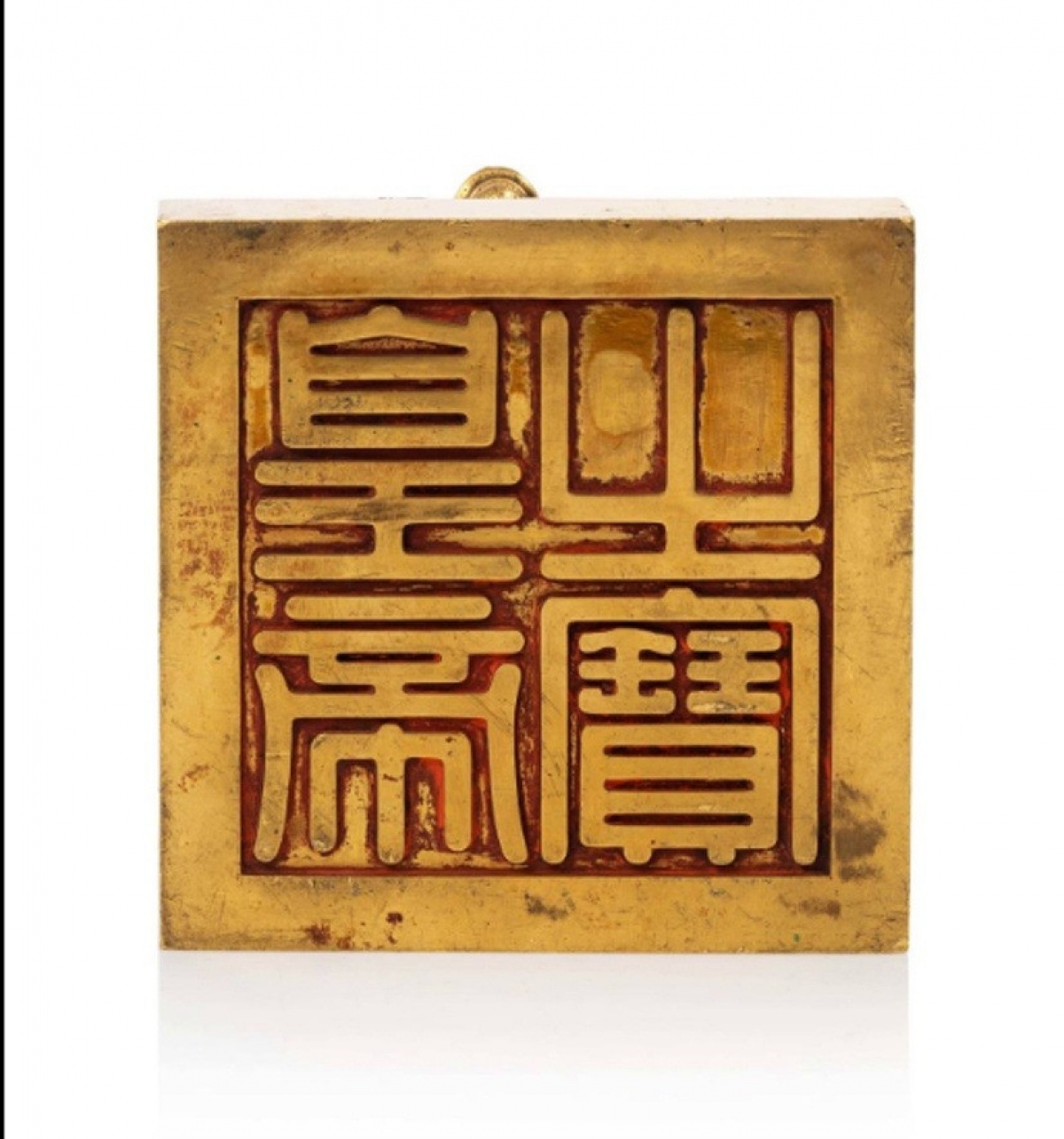Vietnam seeks way to repatriate Nguyen dynasty seal
The imperial gold seal made in 1823 is scheduled for auction at US$3 million.
Vietnam is making efforts to bring home a 11-kg gold seal of the Nguyen Dynasty (1802-1945) before it’s available for auction in France.
| Gold imperial seal made in 1823 for Emperor Minh Mang, the Nguyen Dynasty. Photos: Millon |
Spokeswoman of the Vietnamese Ministry of Foreign Affairs (MoFA) Le Thi Thu Hang said at the press conference today that the Embassy of Vietnam in Paris and the Vietnam Mission to the United Nations are working with the Ministry of Culture, Sports and Tourism (MCST) to seek necessary measures to return the seal to its home country.
The royal seal was previously owned by Bao Dai, the last king of the Nguyen Dynasty before it was put up for auction at Paris-based Millon auction house by his children and grandchildren after his death in France in 1997 and his French wife’s death in 2021.
Millon agreed to halt an auction for the gold royal seal on October 31 under the Government of Vietnam’s request and rescheduled the auction for November 10, according to MCST. Millon allows Vietnam to negotiate for direct purchase.
The starting price of the square-shaped seal with a twisting dragon carved on top was estimated at US$3 million.
The MoFA and MCST are working with relevant agencies and individuals to mobilize all resources to repatriate the object.
The seal was made in 1823 for Emperor Minh Mang who ruled the country between 1820 and 1841.
The seal was consigned to the auction house in the catalog “Great Civilizations: Vietnam Arts Sale” along with around 330 Vietnamese artworks, including a gold bowl in Khai Dinh reign (1917-1025).
| The square-shaped seal with a dragon on top. |
Around the world, efforts are usually made by the countries of origin to repatriate stolen or looted cultural materials.
The imperial seal was used for public and political activities of the Nguyen Dynasty during a historical period. Therefore, it is necessary to find a way to bring the seal back to Vietnam, MCST said.
According to the MCST, as long as they are not abroad, it does not matter whether the artifacts returned are owned by the State or in private possession.
In reality, a number of objects of Vietnamese origin have been repatriated in three ways. The first is individuals and organizations purchased the objects and offered them to the State (Ngu Ho pagoda’s bell was brought to Bac Ninh from Tokyo in 1978). The second is individuals and organizations bought at overseas auctions and ceded to the State (royal clothes in the Nguyen Dynasty for Hue in 2015 and 2022). And foreign governments voluntarily return the artifacts to Vietnam which were seized in illegal trading (some objects were brought home from Germany in 2018 and some from the US in 2022).
The aforementioned gold imperial seals are among more than 100 seals cast from gold and pearl. Many of them are now kept at the Vietnam National Museum of History.
| This is the best seal among more than 100 gold and pearl seals cast in the Nguyen Dynasty. |











